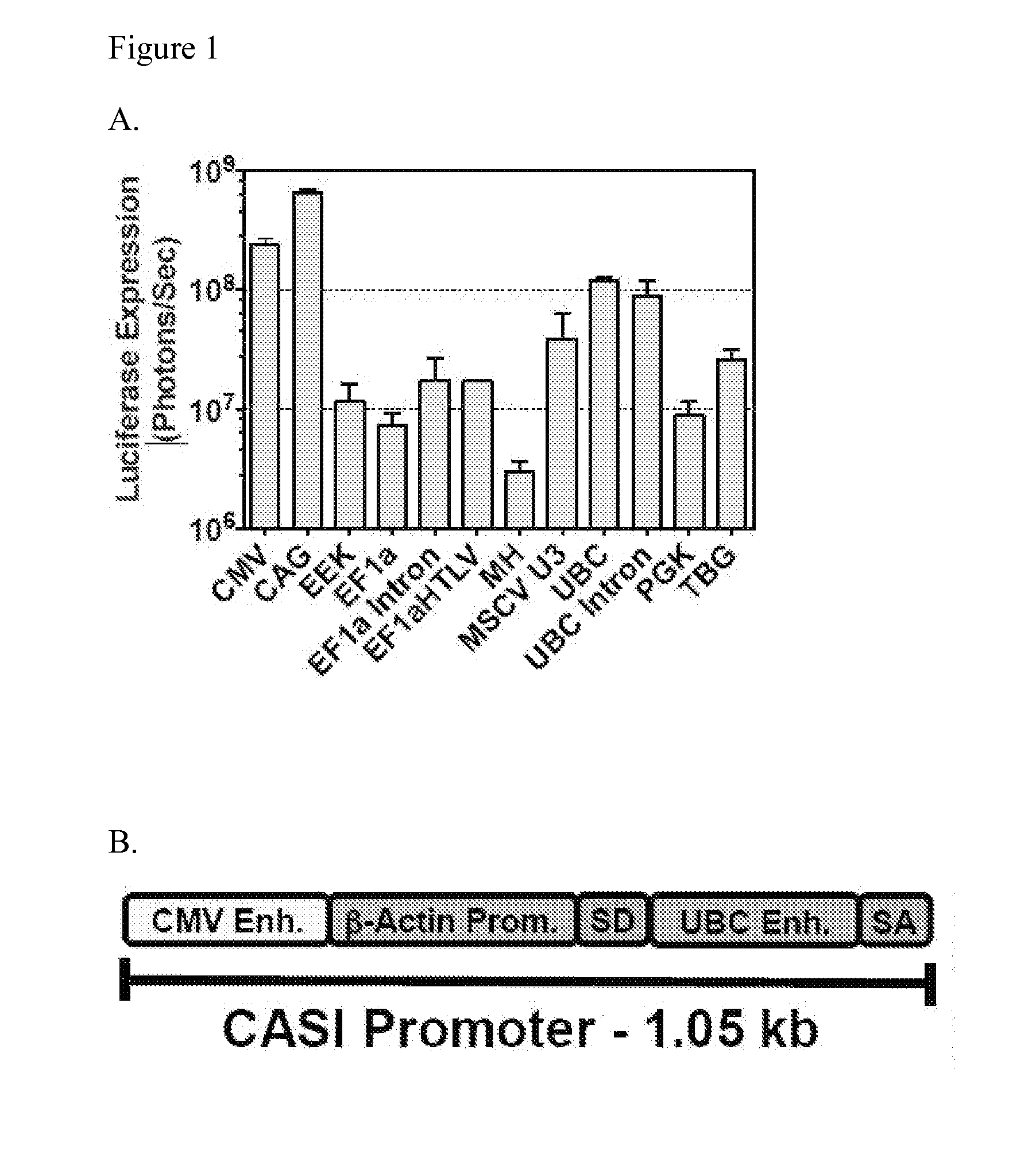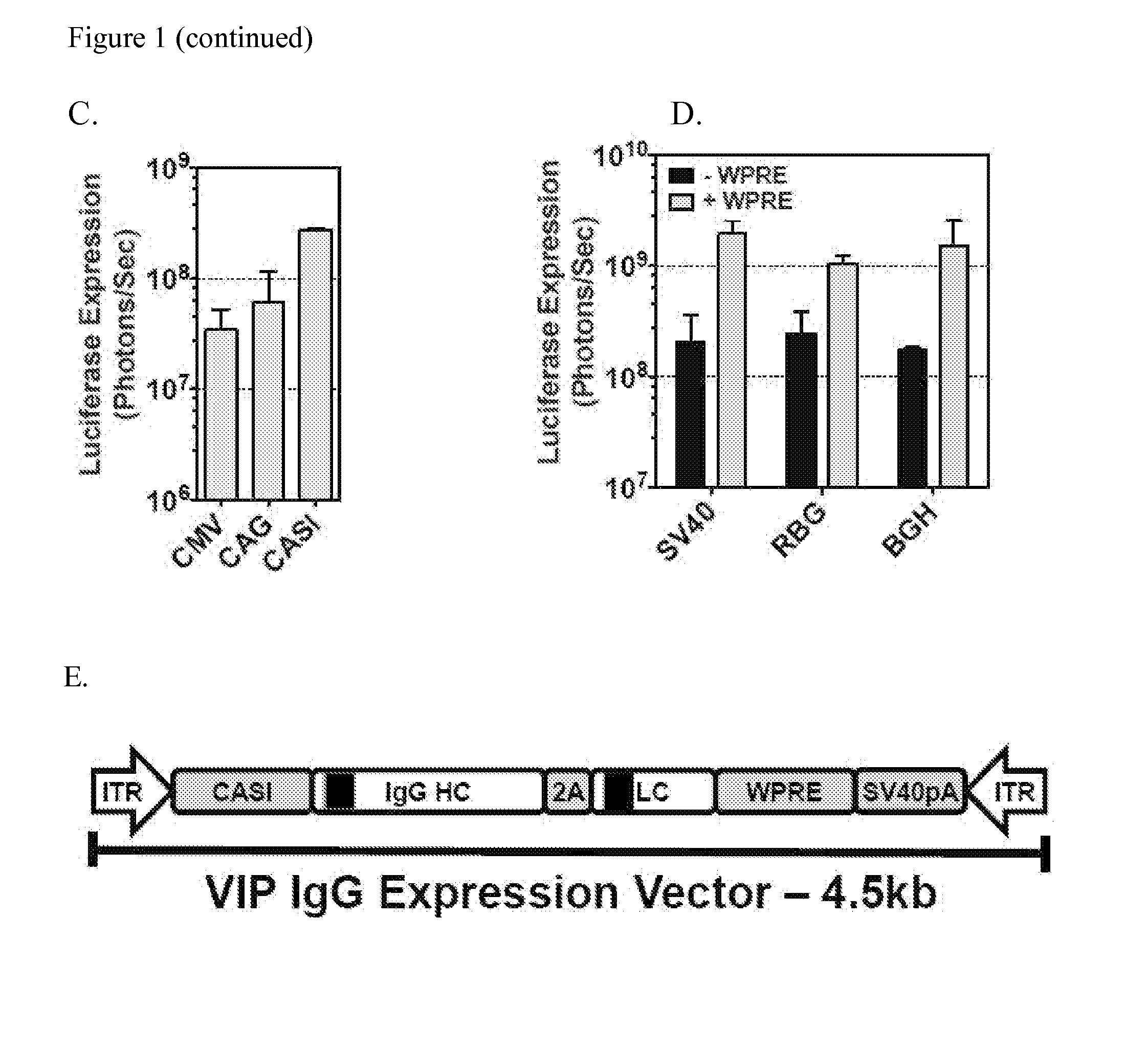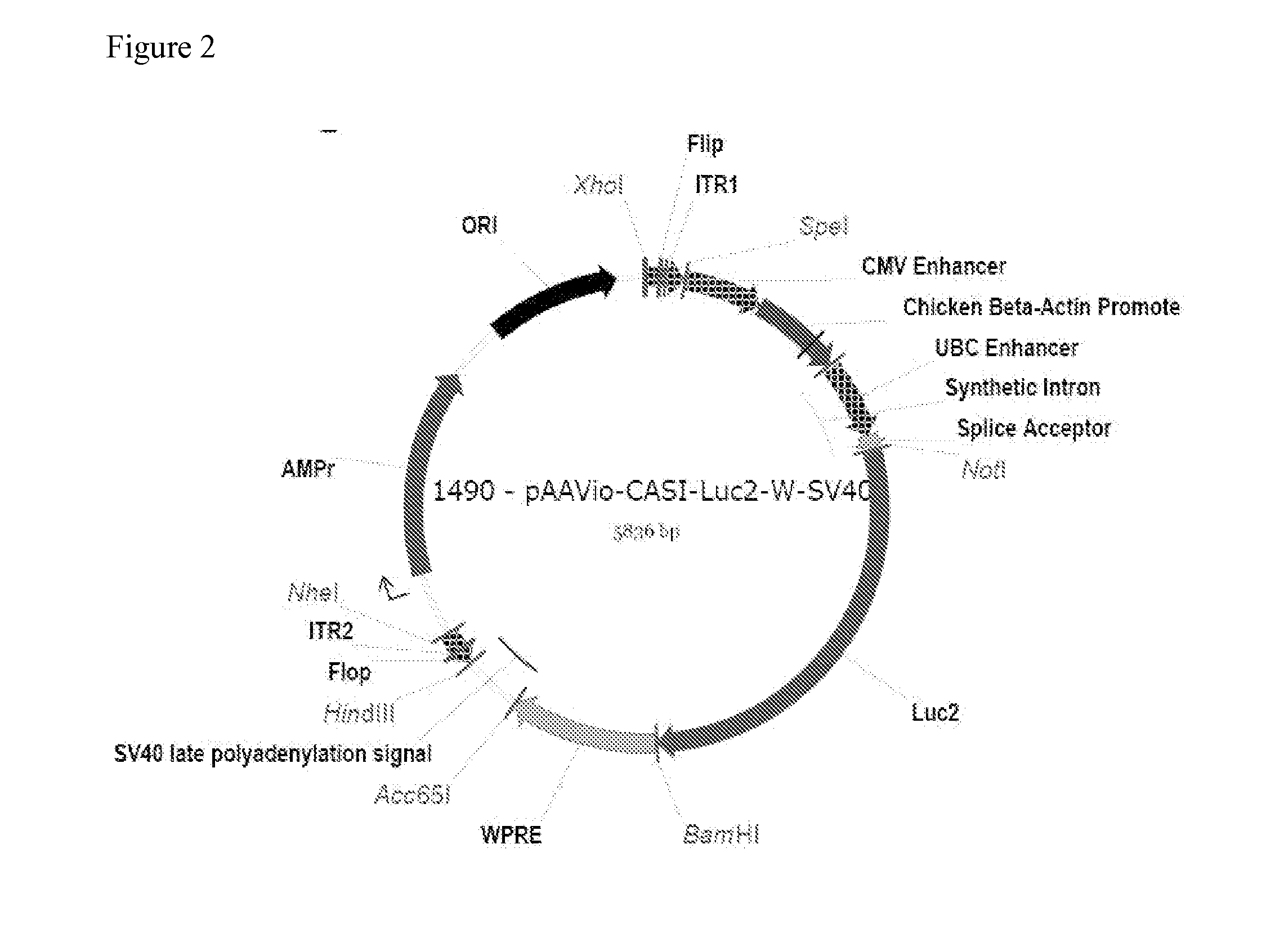Delivery of proteins using adeno-associated virus (AAV) vectors
a technology of adeno-associated virus and protein, applied in the field of immunology and gene delivery, can solve the problems of limited gene expression, unfavorable human immunodeficiency virus (hiv) vaccine development, and inability to elicit analogues of existing broadly neutralizing antibodies, so as to reduce the infection risk in the subject, inhibit viral infection, and reduce the effect of infection risk
- Summary
- Abstract
- Description
- Claims
- Application Information
AI Technical Summary
Benefits of technology
Problems solved by technology
Method used
Image
Examples
example 1
Construction and Cloning of Modular AAV Transfer Vectors
[0208]To construct the AAV transfer vectors, oligonucleotides encoding the 145-base-pair (bp) AAV2-derived inverted terminal repeat 1 (ITR1) in the ‘flip’ orientation and ITR2 in the ‘flop’ orientation flanked by unique restriction sites were synthesized (Integrated DNA Technologies) and annealed before ligation into PBR322 plasmid vector. Subsequently, promoters, transgenes and polyadenylation signals flanked by compatible sites were amplified by PCR and cloned between the ITRs, resulting in a modular AAV transfer vector in which unique combinations of restriction sites flanked each element.
[0209]To evaluate the expression potential of various promoters in muscle expression, a series of vectors carrying the luciferase gene driven by a panel of ubiquitous and tissue-specific promoters were made. These vectors were administered intramuscularly via a single injection in the gastrocnemius muscle and luciferase expression was monit...
example 2
Production and Purification of Recombinant AAV Viruses
[0214]Recombinant AAV virus was produced and purified from culture supernatants according to the procedure as described in the following.
[0215]293T cells were maintained in DMEM medium supplemented with 10% fetal bovine serum, 1% penicillin-streptomycin mix (Mediatech) and 1% glutamine (Mediatech) in a 5% CO2 incubator at 37° C. Three days before transfection, four 15 cm plates were seeded with 3.75×106 cells each in 25 ml media. Alternatively, 1.875×106 cells can be plated per plate four days before the day of transfection (7.5×106 cells plated per virus). Two hours before transfection, media was changed to 15 ml of fresh media.
[0216]The AAV transfer vector was co-transfected with adenoviral helper vectors (pHELP (Applied Viromics) or pAd-delta-F6) and helper plasmid expressing the Rep and Cap gene products of AAV (pAAV 2 / 8 SEED) at a ratio of 0.25:1:2 using BioT transfection reagent (Bioland Scientific). The total amount of DNA...
example 3
Optimization of the Antibody Transgene
[0218]To create an optimal framework for the expression of antibody, the heavy and light chains of several broadly neutralizing HIV antibodies separated by an F2A self-processing peptide sequence were cloned into a mammalian expression vector under the control of the CMV promoter. 293T cells transfected with these vectors demonstrated secretion of human IgG into the culture supernatant that could be detected by ELISA (FIG. 3A). To improve expression, the F2A sequence was re-engineered to better reflect mammalian codon usage and incorporated a furin cleavage site at the N-terminus for optimal processing. Comparison of the vectors with optimized F2A sequence (SEQ ID NO: 9) to the vector with standard F2A sequence (SEQ ID NO: 10) by transfection showed the vectors with optimized F2A sequence produced higher levels of all four antibodies tested.
[0219]To improve secretion of the antibody, the endogenous signal sequences was replaced with a codon opti...
PUM
| Property | Measurement | Unit |
|---|---|---|
| Fraction | aaaaa | aaaaa |
| Fraction | aaaaa | aaaaa |
| Fraction | aaaaa | aaaaa |
Abstract
Description
Claims
Application Information
 Login to View More
Login to View More - R&D
- Intellectual Property
- Life Sciences
- Materials
- Tech Scout
- Unparalleled Data Quality
- Higher Quality Content
- 60% Fewer Hallucinations
Browse by: Latest US Patents, China's latest patents, Technical Efficacy Thesaurus, Application Domain, Technology Topic, Popular Technical Reports.
© 2025 PatSnap. All rights reserved.Legal|Privacy policy|Modern Slavery Act Transparency Statement|Sitemap|About US| Contact US: help@patsnap.com



